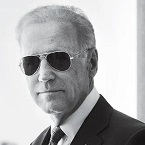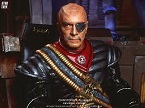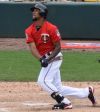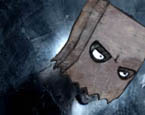TJSweens
Posts: 46140
Joined: 7/16/2007
Status: offline

|
It will never happen, but it's fun to think about.
Unexpected Offseason Trend Re-Opens Questions Surrounding Jhoan Durán
Cody Schoenmann
By Cody Schoenmann
January 17
Could an unexpected offseason trend affect the Twins' bullpen hierarchy (and their starting rotation) in the near future?
In an article published Nov. 20 in the New York Post entitled "Teams turning to their bullpens to solve starter shortage," baseball columnist Joel Sherman wrote: "It is clear teams are going to have to find starters not just everywhere from the Americas to Asia, but also in their own bullpens." What Sherman was alluding to was the then-recent three-year, $30-million deal Reynaldo López signed with the Atlanta Braves. The erstwhile White Sox reliever was going to get a chance to start for Atlanta.
Entering free agency, everyone was under the assumption that López was going to be paid handsomely, but with the anticipation of being a high-leverage set-up man or closer. Interestingly, López isn't a unique case. Last year, former relievers Seth Lugo (San Diego Padres) and Zack Littell (Tampa Bay Rays) were acquired to undergo the same transition. Both were unmitigated success stories, as Lugo earned a three-year, $45-million contract with the Kansas City Royals as a starter, and Littell has become a fixture in the Rays rotation.
This offseason, Michael King, Jordan Hicks, and López (all relievers last season) were either signed or traded for with the intent (or at least the thought) of their becoming full-time starters. Also, A.J. Puk, who earned 15 saves as the Miami Marlins closer last season, is reportedly transitioning to becoming a starter, which is the role he filled coming up through the Oakland Athletics system. With this trend becoming more prevalent every offseason, could the Twins join in on the movement?
At first glance, the Twin who makes the most sense to undergo the same transition is starter-turned-reliever Louie Varland. Unlike the pitchers mentioned above, Varland's transition to reliever was meant to be temporary. The plan was to maximize Varland's fastball (which worked, as his fastball (which traditionally sits around 95.3 MPH) spiked to 100.1 MPH at its peak) and have him operate out of the bullpen as an electric high-leverage arm during the postseason. The plan looked brilliant as Varland struck out one and gave up zero runs over 2/3 innings pitched during the postseason. Still, the long-term plan for the 26-year-old Minnesota native is to have him become a fixture of the team's starting rotation.
More intriguingly, another Twins reliever could attempt to leverage the recent trend around MLB and become a member of the team's rotation: Jhoan Durán. In the past, Durán has expressed a desire to be a starter, which is the role he played until he was on the doorstep of the big leagues in spring 2023. Durán has quickly become one of baseball's best relievers, but would it be in the Twins' best interest to consider transitioning him into becoming a starter? Let's weigh the pros and cons:
Pros
The main argument for turning Durán back into a starting pitcher is that the Twins could use him for more innings. Over the past two seasons, Durán has averaged roughly 65 innings pitched in (primarily) high-leverage relief appearances. In 2023, MLB pitchers averaged 5 1/3 innings per start. Drag that number out over 30 starts, and you get 153 innings. If Durán were to pitch around 153 innings, the quality of his stuff and average velocity on his pitches (most notably his fastball and splinker) would likely diminish in the name of sustainability. Health permitting, however, there is little reason to doubt that Durán would immediately become the Twins' second-best starting pitcher, with the potential to become a bona fide ace.
Durán already has a three-pitch repertoire, including an elite fastball and a curveball and splitter as above-average complementary pitches. He might need to implement a fourth and potentially fifth pitch to become a starter. Because he already has three pitches that move mostly in the vertical plane, it could be in his best interest to implement one of multiple pitches that move to the arm side and/or glove side. Durán's arm-side pitch would likely be a more traditional changeup, or a variation on his splitter that involves a bit less velocity and a bit more pronation; his glove-side pitch would likely be a sweeper. Though it is hard to know what Durán would add in this hypothetical situation, it is fair to assume whichever pitch he and the Twins coaching staff elected to implement would suffice.
Admittedly, Durán struggled as a starting pitcher in the Diamondbacks and Twins minor leagues, but his last relevant season as a starter came in 2019. Since that time, the 26-year-old has been able to sufficiently improve his command and secondary pitches, while seemingly mitigating (if not entirely erasing) any genuine concern over a significant injury taking place. Much of Durán's good bill of health is likely due to him only throwing around 65 innings per year. Yet, although there is sufficient reason to be skeptical, he has earned the benefit of the doubt when speculating whether his favorable health status would be sustainable if pushed to five or six innings per appearance.
Cons
Though he isn't in the same tier as the best relievers in the game (like Félix Bautista, Devin Williams, or Josh Hader), Durán has quickly become one of the best second-tier closers in MLB alongside Emmanuel Clase, David Bednar, and Camilo Doval. If Durán were to transition into a starter, the Twins would be without one of the best relievers in the game, which would significantly hamper the quality of the team's bullpen.
If Durán were to become a reliever, Brock Stewart or Griffin Jax would probably become the team's closer, with Caleb Thielbar, Kody Funderburk, and potentially Varland needing to be the organization's primary high-leverage middle relievers. The construction of the team's high-leverage relievers wouldn't change much, but losing one of the best closers in the game would inevitably diminish the effectiveness of an already middling bullpen. If Durán were to become a starter, the team would need to acquire a different top-tier reliever, which would come at the expense of significant prospect capital or a hefty price tag. Earlier today, Ted Schwerzler suggested one possible solution to that problem, but it also illustrates the cost involved. Would the tradeoff be worth it if Durán became one of the best starters in the Twins' rotation? Presumably so. But if the bullpen were to sink into becoming one of the worst units in the league, what good would a lead through six or seven innings be?
As noted earlier, there is little reason to doubt that Durán's pitch quality and ability to stay healthy would be sustainably sufficient as a starter. Though this is the case, there is still reason to worry about the possibility of Durán struggling to stay healthy and effective as a starter. He excels in one- or two-inning roles, but that is because he can maximize his pitching repertoire while not needing to physically strain himself over multiple innings and 80 or more pitches. Durán's velocity, break, location, and durability would all drop due to being stretched out over more innings. The only question is, how much?
Although the Twins converting Durán into a starting pitcher is highly unlikely, the recent offseason trend of relievers signing as starters and Durán recently expressing a desire to become a starter once again leave the opportunity for a significant transition a still-plausible outcome.
_____________________________
"The eternal fate of the noble and enlightened: to be brutally crushed by the armed and dumb."
|

 Printable Version
Printable Version













 New Messages
New Messages No New Messages
No New Messages Hot Topic w/ New Messages
Hot Topic w/ New Messages Hot Topic w/o New Messages
Hot Topic w/o New Messages Locked w/ New Messages
Locked w/ New Messages Locked w/o New Messages
Locked w/o New Messages Post New Thread
Post New Thread